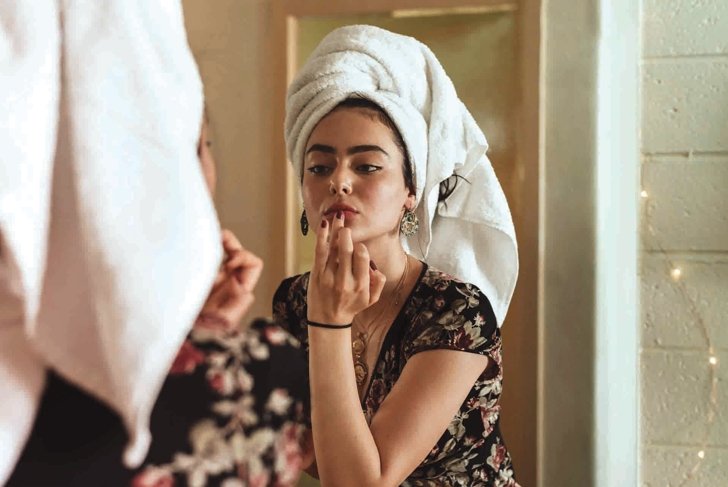
Like our morning egg, bacteria once endured a bad rap. And, for years, we were told to vigorously scrub off bacteria in the name of clear, luminous skin. Now, science suggests we might want to back away slowly from harsh cleansers, add bacteria to our face, and eat it, too.
Our bodies are host to something called the microbiome, which plays an essential role in many of the mechanisms that promote homeostasis (keeping the body in balance). The microbiome consists of an estimated 100 trillion microbes, including bacteria, fungi, and viruses, the bulk of which reside in our gut.
In recent years, researchers have been taking a long, hard, microscopic look at the human microbiome and realizing that not all bacteria are germy, harmful, or unwelcome.
The gut and the skin: an unexpected connection
Our gut is the HQ of our body’s microbiome, but skin has its own. And like the rest of our body, skin effectively performs its functions—protection, temperature regulation, water retention, and more—when it’s in homeostasis. Our skin is colonized by an abundance of bacteria, and most of them are not only harmless but even beneficial.
Science ascertains the gut and skin microbiomes are inextricably linked. In fact, they have a lot in common. “There are a lot of similar micro-organisms that can be found in the gut and on the skin’s surface,” says Gretchen Frieling, MD, board-certified dermatopathologist.
“By balancing ‘good’ and ‘bad’ bacteria, your gut enables your skin to act as a barrier that prevents toxins and pathogens from entering the body,” says Frieling. “When both your gut and skin are healthy, your body will produce more anti-inflammatory molecules to fight skin conditions like acne, eczema, psoriasis, and rosacea.”
Indeed, research has found that an unhealthy gut microbiome can cause inflammatory manifestations on skin. A balanced microbiome, on the other hand, can reinforce skin so it can effectively offset factors that can “lead to redness, dryness, and a weakened surface that more rapidly shows signs of aging from environmental stressors,” according to Frieling.
Probiotics and prebiotics: eating bacteria for healthy skin
Factors such as diet and stress can cause an imbalance in our microbiome, but the flip side is also true: we can regain balance by adding bacteria to our diet, specifically in the form of probiotics.
Probiotics are “friendly” live bacteria that benefit the body, specifically the digestive system. In one study, people who took probiotic supplements for 12 weeks saw decreased transepidermal water loss (when water evaporates from skin, leaving it parched) and increased hydration. In another study, probiotics helped improve skin barrier function. A third study found that probiotic intake helped lower skin sensitivity.
Consuming prebiotics, a special form of dietary fibre that acts as a fertilizer for the good bacteria in your gut, is also important, says Frieling.
“You need a diet high in indigestible fibre (prebiotics) to feed the good bacteria in your gut; without a food source, probiotics can’t thrive,” she says. “If you take the probiotic (the bacteria), but don’t take the prebiotic (the food source), chances are you’ll have a difficult time keeping beneficial micro-organisms.”
Applying probiotics to your skin
We used to believe we had to get our skin squeaky clean of dirt, oil, and bacteria. Now we know better—and there are skin care products teeming with bacteria.
Topical probiotics have been shown to increase ceramides (naturally found in the uppermost layer of skin, they help retain water) in subjects with eczema, reduce the concentration of acne lesions and pathogenic bacteria, and reduce skin sensitivity in healthy people.
Be sure to consult your health care practitioner, because probiotic skin care might not be for everyone. “Based on a series of ongoing research, these products are not intended for anyone who is immunosuppressed or has a low level of white blood cells,” cautions Frieling.
Like our microbiome, our skin simply seeks balance. (Don’t we all?) Whether that equilibrium arrives through probiotic supplements, skin care, or a diet with more fermented foods, once our skin finds its happy medium, it will calm down, get stronger, and radiate. And we’ll have our friendly neighbourhood bacteria to thank. It’s a good thing that bacteria saved its reputation.
Easy-peasy prebiotics
If you’re daunted by the idea of incorporating raw chicory root or Jerusalem artichoke (two illustrious prebiotics) into your diet, don’t be. You can find prebiotics aplenty in more common foods such as bananas, raw leeks, raw onions, raw garlic, apples, and flaxseeds.
Finding your perfect probiotic match
Before you invest in a probiotic product, identify which strains are included and ask the company about the research behind it. Certain strains of bacteria work better for different complexions, says dermatopathologist Gretchen Frieling, MD.
Got thirsty skin?
Try popping a probiotic supplement with strains of Lactobacillus paracasei NCC 2461, which, studies have shown, can strengthen the skin barrier and improve hydration levels.
Sarah Ban is a freelance digital journalist, copywriter, and editor and the owner of Sarah Ban & Co., an editorial agency for beauty, health, and wellness brands. sarahban.com
This article was originally published in the March 2020 issue of alive Canada, under the title \”Probiotics for Skin Care.\”













